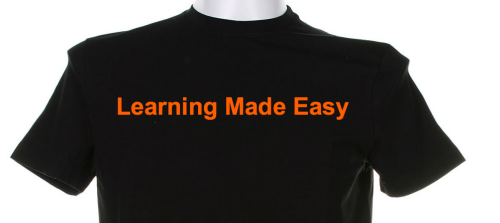1) Retail – business activities involved in selling goods and services to consumers for their personal, family or household use.
2) Breaking Bulk – retailers purchase products in larger quantities from manufacturers and then offer products in smaller quantities to consumers as per their requirements.
3) Store Retailer – retailing of various products by carrying out operations from store. Classified into specialty store, departmental store, super market, convenience store, discount store.
4) Specialty store – has narrow product line with deep variety e.g. apparel stores, book stores.
5) Departmental store – large retail store which offers wide variety of products under one roof separated by different departments. It has many product lines – clothing, household goods, home furnishings etc. E.g. Biz Bazaar, Globus
6) Supermarkets – designed to serve total needs for food, laundry and household maintenance products – relatively large, low-cost, low-margin, high volume and self-service operation. E.g. Hypercity
7) Convenience stores – relatively small store located near residential area, open for long hours and 7 days a week, carries limited line of high turnover convenience products at slightly higher prices e.g. Apollo pharmacy
8) Discount Store – offers standard merchandise sold at lower prices with lower margins and higher volumes. e.g. Apna Bazaar, LOOT
9) Non-store retailer – retailing done without conventional store-based locations. includes services such as vending machines, direct-home selling, telemarketing, catalog sales, mail order and television marketing programmes.
10) Direct selling – deals with door-to-door or at home sale parties e.g.AMWAY, Oriflame.
11) Direct marketing – involves direct response marketing i.e. direct mail, catalog marketing, telemarketing e.g. Dell computers
12) Online shopping mall – one click will get you the product. uses internet to shop variety of products. e.g. eBay, Rediff Shopping
13) Television shopping – shopping takes place by watching a product on television by understanding its features, price, quantity properly and delivery is at doorstep of the consumer. Online mode of payment takes place. e.g. Asian Sky Shop.
14) Retail organizations – corporate chains, voluntary chains, retailer cooperatives, consumer cooperatives, franchise organizations, merchandising conglomerates.
15) Corporate chains – 2 or more outlets have common ownership and control, involves centralized buying and merchandising operations and similar lines of merchandise. e.g. Pantaloon, Westside
16) Retailers Cooperatives – independent retailers engage in bulk buying and collective merchandising e.g. Amul, Shop Rite
17) Consumer Co-operatives – Retail outlets owned and operated by consumers for mutual benefits. Based on open consumer membership, equal voting among members, limited customer services and shared profits among members n the form of rebates
18) Franchise organization – contractual relationship between a franchiser i.e. a manufacturer, wholesaler or service organization and franchisees i.e. independent entrepreneurs who purchase the right to own and operate any number of units in the franchise systems. e.g. Dominos Pizza, McDonalds, KFC
19) Self-service retailing – customers serve themselves as per their own requirement and full flexibility is given in the hands of the customer e.g. ATM machines.
20) Self-selection retailing – customers select the product on their own and if required ask for assistance. allows consumers to perform most or all of services associated with retail purchasing e.g. online purchasing, vending machine purchases.
21) Limited service retailing – more varieties of products under one roof. retailer’s aim is to provide customer satisfaction and customer contentment e.g. credit and merchandise return privileges.
22) Full service retailing – handle nearly all aspects of purchase to the point where consumers select the item they wish to purchase. retailer follow full price strategy and full service approach to add value to customer’s purchase.
23) Corporate chains – opposite form of single ownership which has size bigger as compare to individual retail store, good customer database, efficient supply chain, offers, gift coupons. Corporate chains operate in various formats of retail stores like discount store i.e. Subhiksha, Hypermarkets i.e. Hypercity mall, supermarkets i.e. Big bazaar and speciality store i.e. food bazaar.
24) Franchising – ownership to a limited level transferred by the owner and promoter of the brand i.e. franchisor tothose who wish to take it i.e. franchisee in lieu of certain returns.
25) Merchandise plan – allows retail buyer to forecast some degree of accuracy what to purchase and when to have it delivered. A retailer attempts to offer the right quantity of the right merchandise in the right place at the right time while meeting company’s financial goals.




45 Comments